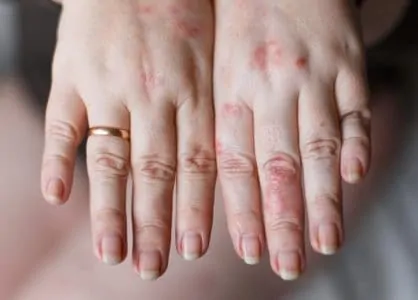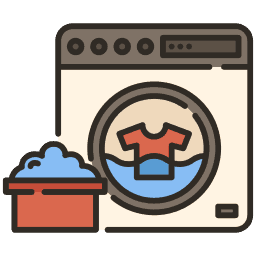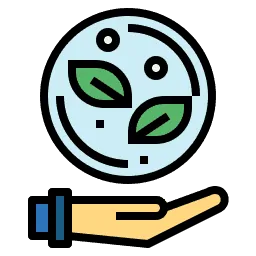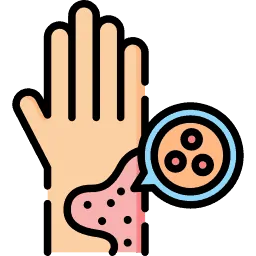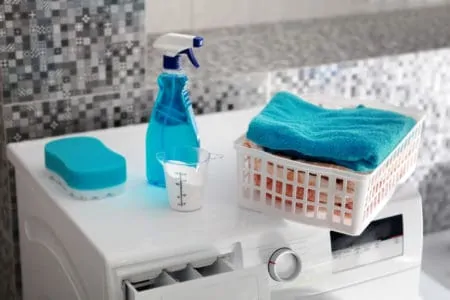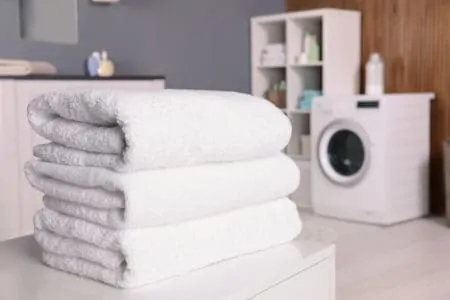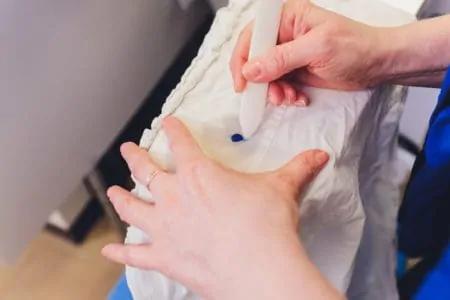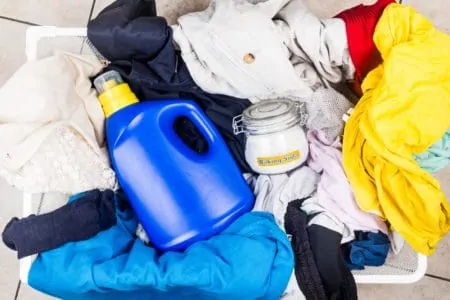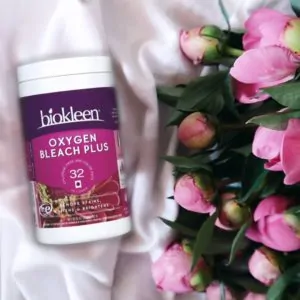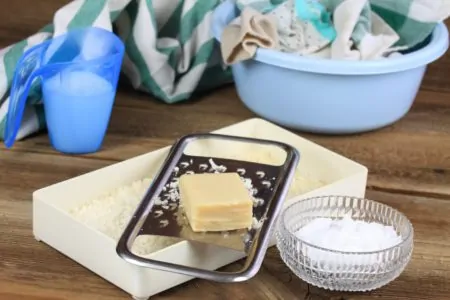Laundry detergent is necessary to clean clothes, brighten colors, remove stains and whiten whites. However, many laundry detergents contain harsh chemicals that can irritate your skin (1).
If you experience a laundry detergent rash, you’re not alone. Many people experience negative side effects from regular laundry detergent.
At the end of this guide, you should have some top tips going forward. We’ll help you identify laundry detergent rashes as well as find some preventative measures. Plus, we’ll give you tips on shopping for a detergent that’s kind on your clothes and skin.
Key Takeaways
- Laundry detergent rashes can be caused by allergens or contact dermatitis, with symptoms like red, scaly, and itchy skin.
- Identifying a laundry detergent rash often involves looking for rashes in areas where clothing is tight, such as behind knees or underarms.
- To get rid of rashes, try remedies like cold compresses, oatmeal baths, or coconut oil, but consult a doctor if symptoms worsen.
- Prevent future rashes by using hypoallergenic detergents, doing an extra rinse, and avoiding scented products.
What Causes Laundry Detergent Rashes?
If you experience a rash or hives from your laundry detergent, it’s either caused by allergens or contact dermatitis.
Allergens
Many laundry detergents contain allergens: substances that people can be allergic to.
The chemicals in your laundry detergent can trigger an allergic reaction. Usually, the synthetic fragrance is the main culprit of an allergic reaction. At least 1% of the population has a fragrance allergy (2).
Preservatives and dyes in laundry detergent are also known to cause allergic reactions and sensitivities. You’re more likely to experience an allergic reaction if you have eczema or existing skin allergies (3).
Contact Dermatitis
Contact dermatitis is a type of eczema triggered by exposure to certain substances, such as laundry detergents (4). Contact dermatitis is a red, itchy rash caused by your skin coming into direct contact with a substance you’re allergic to (5).
There are two types of contact dermatitis: irritant and allergic.
Irritant contact dermatitis is more common and occurs after repeated exposure to something, such as laundry detergent (6). Your skin becomes inflamed due to this repeated contact with the irritant. The irritant removes oils and moisture from your skin and penetrates deep, causing a red, scaly and itchy rash.
Allergic contact dermatitis is a delayed response to an allergen (7). You may notice symptoms up to 72 hours after being exposed to the substance. This is known as a delayed hypersensitivity.
Most people with allergic contact dermatitis experience red, itchy, swollen and blistering rashes. Thankfully, this allergy settles down once you’ve stopped exposure to the allergen.
How to Identify Laundry Detergent Rash
We’ll help you identify whether your rash is because of laundry detergent.
Symptoms of a Detergent Allergy
If you have a detergent allergy, you might experience (8):
- Red skin.
- Scaly patches of skin.
- Hives.
- Cracked or leathery skin.
- Burning or itching.
- Blisters — they might ooze.
- Sensitivity to the sun.
- Swelling in the eyes, face or genital area.
What Does a Rash From Laundry Detergents Look Like?
It’s hard to identify a washing powder rash by appearance because it looks similar to a generic eczema rash. Both types of rashes are scaly, red, cracked and itchy.
Some other things that can help determine whether laundry detergent caused the rash include:
- The rash is mostly contained to areas where clothing is tight on your body. This could be your underarms, behind your knees, in the crook of your arm and between your legs.
- If it is widespread, then it will still be contained to areas where your clothes touch. For instance, if checking for a detergent rash on a child, check under their diaper. As long as you aren’t using cloth diapers, this can help determine if it’s caused by detergent. If there is no rash there — it’s probably a detergent rash.
- If it’s present on one side of your face, and you’re a side sleeper, then the detergent on your pillow could be the cause.
- If it’s sudden, ask yourself if you’ve recently changed detergents.
- You can see an allergist who can perform a patch test for you.
What If It’s Not Your Detergent?
If you’ve ruled out that it’s definitely not your laundry detergent, what else could it be? Here are some other substances that commonly cause similar looking rashes:
- Bug bites (9).
- Diaper rash.
- Beauty products.
- Soap.
- Chemicals in rubber, latex or elastic.
- Touching poisonous plants.
- An allergic reaction to a medication.
- Dyes in clothes (10).
- Hay fever.
- Infections, such as chickenpox, measles and more.
- Nettle rash.
- Sunscreen (11).
- Baby wipes.
- Household cleaners.
Take Action
How to Get Rid of Rashes From Laundry Detergents
There are some at-home remedies you can try to treat your washing powder rash. However, if symptoms persist or worsen, contact your doctor.
Warning
Cold Compress
Fill a bag with ice or soak a cloth in cold water. Hold it to the rash until the itching or pain subsides. This helps to limit blood flow to the inflamed area (12). It can reduce swelling straight away, giving you immediate relief.
Oatmeal Bath
Old school, we know! But an oatmeal bath can really help. Just make sure you use colloidal oats — not the kind you eat at breakfast. Oat oil has anti-oxidant and anti-inflammatory benefits which can help your rash (13).
To do this, fill your bathtub with warm water and one cup of colloidal oats. Soak for 30 minutes before rinsing off in a cool shower.
Coconut Oil
We love keeping coconut oil in both our bathroom and kitchen. It serves good use in many situations, including curing rashes. Virgin coconut oil has antibacterial, healing, and anti‐inflammatory qualities (14). You can use it as a moisturizer, applying it directly onto the affected areas of your skin.
Visit the Pharmacy
Your pharmacist can help find the best over-the-counter treatment for your rash. This will usually come as an ointment which you can use daily at home. These are typically inexpensive but effective.
Moisturizing the rash can treat it. Since the allergens in laundry detergent break down the skin’s natural oils and moisture, bringing back that moisture is key.
Aloe Vera
For an inexpensive and at-home option, some health professionals recommend using aloe vera on your rashes. Aloe vera can help to soothe irritation and pain caused by your rash (15).
To use, wash and dry the affected area and apply aloe vera to your skin like a moisturizer.
Preventing Laundry Detergent Rashes
Washing powder rashes can be painful, irritating and for many people, embarrassing. It’s important to know how to prevent these rashes to protect your skin in the future.
We’ve got top tips for you to avoid these rashes:
- Switch your detergent: To be kinder on the skin, switch out your laundry detergent with something hypoallergenic. Many brands create hypoallergenic detergents. Also, well-known brands often have a hypoallergenic option in their range.
- Rinse your clothes again: When your washing machine cycle finishes, do an extra rinse. This will help to remove any lingering detergent so that it doesn’t come in contact with your skin.
- Add distilled white vinegar: On the rinse cycle, add a capful of distilled white vinegar. This will remove any soap and mineral residue as well as soften clothes (16).
- Use less detergent: Always make sure to follow the manufacturer’s instructions when measuring out detergent. You might be using too much per load which can irritate your skin further.
- Moisturize: Before you get dressed, use moisturizer all over your body. Not only is this kind to your skin, it acts as a barrier between you and your clothes. That way, detergent has a more difficult time penetrating your skin and causing a rash.
- Dry your clothes outside: The UV light from the sun can kill bacteria and germs on clothes (17). If they’re that little bit cleaner, you can maybe get away with washing garments less often. This reduces your exposure to laundry detergent.
- Wash before you wear: When you get new clothes, always wash them before wearing them. This can help remove some of the dyes on the clothes which are known to cause an allergic reaction (18).
- Skip scented products: We know — fabric softeners and scented stain removers have a lovely aroma. But synthetic fragrances can cause rashes. If you’d like to scent your load of laundry, essential oils are great and they’re all natural.
- Stick with one detergent: It’s tempting to buy whatever is on sale, but if you know your body likes a certain brand, then stick with it.
FAQs
Rash, Be Gone
Breaking out in hives or experiencing allergies because of your laundry detergent is normal. The chemicals in detergent cause itchy, irritated and cracking skin. You can solve this by switching to a hypoallergenic and dermatologically-tested detergent.
In the meantime, treat your rash with an over-the-counter moisturizer, coconut oil or a cold compress. If the rash persists or worsens, contact your doctor.
